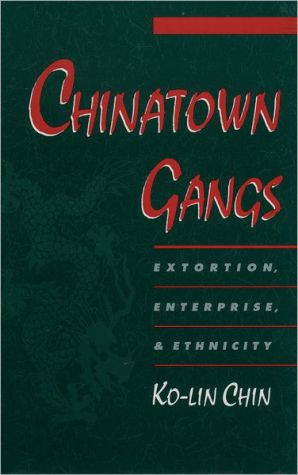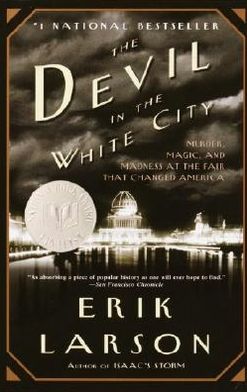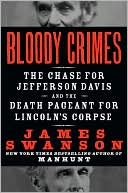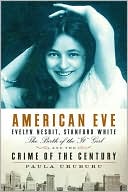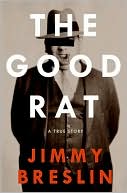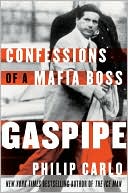Chinatown Gangs: Extortion, Enterprise, and Ethnicity
In Chinatown Gangs, Ko-lin Chin penetrates a closed society and presents a rare portrait of the underworld of New York City's Chinatown. Based on first-hand accounts from gang members, gang victims, community leaders, and law enforcement authorities, this pioneering study reveals the pervasiveness, the muscle, the longevity, and the institutionalization of Chinatown gangs. Chin reveals the fear gangs instill in the Chinese community. At the same time, he shows how the economic viability of...
Search in google:
In Chinatown Gangs, Ko-lin Chin penetrates a closed society and presents a rare portrait of the underworld of New York City's Chinatown. Based on first-hand accounts from gang members, gang victims, community leaders, and law enforcement authorities, this pioneering study reveals the pervasiveness, the muscle, the longevity, and the institutionalization of Chinatown gangs. Chin reveals the fear gangs instill in the Chinese community. At the same time, he shows how the economic viability of the community is sapped, and how gangs encourage lawlessness, making a mockery of law enforcement agencies.Ko-lin Chin makes clear that gang crime is inexorably linked to Chinatown's political economy and social history. He shows how gangs are formed to become "equalizers" within a social environment where individual and group conflicts, whether social, political, or economic, are unlikely to be solved in American courts. Moreover, Chin argues that Chinatown's informal economy provides yet another opportunity for street gangs to become "providers" or "protectors" of illegal services. These gangs, therefore, are the pathological manifestation of a closed community, one whose problems are not easily seen—and less easily understood—by outsiders.Chin's concrete data on gang characteristics, activities, methods of operation and violence make him uniquely qualified to propose ways to restrain gang violence, and Chinatown Gangs closes with his specific policy suggestions. It is the definitive study of gangs in an American Chinatown. Robert Taylor Chin provides an in-depth analysis of Chinese gang activity in his book, CHINATOWN GANGS. His insightful work provides one of the best ethnographic studies of its kind. His research rests in the strength of diverse case study approaches (mainly using interviews) conducted in Manhattan, Queens, and Brooklyn in New York City. His central theme contradicts many assertions that "a well-organized, monolithic, hierarchical criminal cartel, sometimes referred to as the Chinese Mafia," exists in the United States or any other nation (p. 123). Instead, Chin suggests that in most cases, young, juvenile Chinese street gangs are not controlled nor do they work for adult crime cartels. Only on a "ad hoc basis" does such cooperation exist between street gangs and adult organized crime groups. According to Chin, they are loosely knit and membership changes constantly. He suggests that most crime involvement by Chinese gangs is relatively benign, primarily affecting the Chinese community, involving low-grade income-generating crimes such as extortion, gambling, prostitution, robbery, drug trafficking, and human smuggling. He asserts that "the extent of Chinese involvement in heroin trafficking and human smuggling appears to have been exaggerated by a few well-publicized incidents" and is of greatest concern only to law enforcement authorities (pg. 163). Indeed, Chin indicates that his research reveals that "Chinese gangs are being treated as scapegoats for heroin trafficking and human smuggling. More importantly, Chin's research indicates that there is no significant long-term association with smugglers based in Asia. This research is certainly limited in scope, having data localized from New York City, an East Coast megatropolis that is, in many ways, significantly different from experiences on the west coast. First, Chin's work concentrates on Chinese street gangs. In some instances, he appears to use Asian gangs interchangeably with Chinese gangs, a very different and problematic use of terms. Chin fails to clarify significant differences between the historical development of Chinese gangs and more recent Asian gangs from Cambodia, Laos, and Vietnam. Further, he never really expands on the differences between these latter gangs and the Chinese street gangs under study. There are significant differences between Chinese street gangs in New York and the various, relatively new Asian gangs observed on the West Coast and other parts of the country. Many of these latter gangs (especially from Vietnam) spawned from recent immigration waves greatly impacting the United States and particularly California. Yet, in Chin's book, there is relatively little, if any discussion of these differences. Interesting, is that while significant yet limited numbers of incidents (especially on the west coast) have revealed strong associations between Asian street gangs (including Chinese street gangs) and sophisticated organized crime cartels, Chin announces that "although a number of law enforcement authorities have suggested that many Chinese offenders are involved in both heroin trafficking and human smuggling, there is no reliable information to support this contention at this time." (163). I would suggest that Chinese gang members may be very reluctant to share their associations with Dr. Chin during their interviews. Such a blanket statement is contradicted even in Chin's own work when discussing the Ghost Shadows; after all, this was a large and successful racketeering case. Historical and scholarly work on other street gangs, tongs and triads (such as the Chih Kung Tong, Oh Leong and Hip Sing) also raises questions as to the veracity of such a statement. Indeed, there are many cases were Asian and Chinese street gangs are inexorably linked to more sophisticated, adult organized crime cartels. These comments are not made to denigrate the study completely; they only point-out a weakness in any case study on such a huge topic -- qualitative research simply does not lend itself to such broad based conclusions. Chin's data on gang characteristics, activities, and violence are significantly important. He clearly links gang activity with Chinatown's political economy and social development in New York, limited to a unique geographical and historical setting. Such are the problems with ethnographic studies. Probably Chin's most important contribution is his outstanding discussion on gang behavior and criminality, particularly the in-depth analysis of extortion and the Chinese community. Clearly, Chin's work may be the only reliable data we have on such a closed and isolated behavior where both victim and offender have agreed upon "norms" involving the amount of money to be requested, the demeanor to be displayed, and the timing and frequency of the extortion demands. Chin's work may be more interesting for the student interested in understanding victimization patterns than one desiring to better comprehend offender behavior. In any event, Chin's book is well worth the read. It is straightforward and relatively easy to digest, chock full of magnificent details. It provides a wonderful addition to the growing literature on Asian gangs.
1Introduction32Research Strategies and Methods213Severity of Gang Victimization354Patterns of Gang Extortion595Victim Reactions to Gang Extortion786Gang Characteristics1007Gang Violence1258The Gang as an Enterprise1429Controlling Chinese Gangs164Notes191Glossary209Bibliography211Index227
\ Robert TaylorChin provides an in-depth analysis of Chinese gang activity in his book, CHINATOWN GANGS. His insightful work provides one of the best ethnographic studies of its kind. His research rests in the strength of diverse case study approaches (mainly using interviews) conducted in Manhattan, Queens, and Brooklyn in New York City. His central theme contradicts many assertions that "a well-organized, monolithic, hierarchical criminal cartel, sometimes referred to as the Chinese Mafia," exists in the United States or any other nation (p. 123). Instead, Chin suggests that in most cases, young, juvenile Chinese street gangs are not controlled nor do they work for adult crime cartels. Only on a "ad hoc basis" does such cooperation exist between street gangs and adult organized crime groups. According to Chin, they are loosely knit and membership changes constantly. He suggests that most crime involvement by Chinese gangs is relatively benign, primarily affecting the Chinese community, involving low-grade income-generating crimes such as extortion, gambling, prostitution, robbery, drug trafficking, and human smuggling. He asserts that "the extent of Chinese involvement in heroin trafficking and human smuggling appears to have been exaggerated by a few well-publicized incidents" and is of greatest concern only to law enforcement authorities (pg. 163). Indeed, Chin indicates that his research reveals that "Chinese gangs are being treated as scapegoats for heroin trafficking and human smuggling. More importantly, Chin's research indicates that there is no significant long-term association with smugglers based in Asia. This research is certainly limited in scope, having data localized from New York City, an East Coast megatropolis that is, in many ways, significantly different from experiences on the west coast. First, Chin's work concentrates on Chinese street gangs. In some instances, he appears to use Asian gangs interchangeably with Chinese gangs, a very different and problematic use of terms. Chin fails to clarify significant differences between the historical development of Chinese gangs and more recent Asian gangs from Cambodia, Laos, and Vietnam. Further, he never really expands on the differences between these latter gangs and the Chinese street gangs under study. There are significant differences between Chinese street gangs in New York and the various, relatively new Asian gangs observed on the West Coast and other parts of the country. Many of these latter gangs (especially from Vietnam) spawned from recent immigration waves greatly impacting the United States and particularly California. Yet, in Chin's book, there is relatively little, if any discussion of these differences. Interesting, is that while significant yet limited numbers of incidents (especially on the west coast) have revealed strong associations between Asian street gangs (including Chinese street gangs) and sophisticated organized crime cartels, Chin announces that "although a number of law enforcement authorities have suggested that many Chinese offenders are involved in both heroin trafficking and human smuggling, there is no reliable information to support this contention at this time." (163). I would suggest that Chinese gang members may be very reluctant to share their associations with Dr. Chin during their interviews. Such a blanket statement is contradicted even in Chin's own work when discussing the Ghost Shadows; after all, this was a large and successful racketeering case. Historical and scholarly work on other street gangs, tongs and triads (such as the Chih Kung Tong, Oh Leong and Hip Sing) also raises questions as to the veracity of such a statement. Indeed, there are many cases were Asian and Chinese street gangs are inexorably linked to more sophisticated, adult organized crime cartels. These comments are not made to denigrate the study completely; they only point-out a weakness in any case study on such a huge topic -- qualitative research simply does not lend itself to such broad based conclusions. Chin's data on gang characteristics, activities, and violence are significantly important. He clearly links gang activity with Chinatown's political economy and social development in New York, limited to a unique geographical and historical setting. Such are the problems with ethnographic studies. Probably Chin's most important contribution is his outstanding discussion on gang behavior and criminality, particularly the in-depth analysis of extortion and the Chinese community. Clearly, Chin's work may be the only reliable data we have on such a closed and isolated behavior where both victim and offender have agreed upon "norms" involving the amount of money to be requested, the demeanor to be displayed, and the timing and frequency of the extortion demands. Chin's work may be more interesting for the student interested in understanding victimization patterns than one desiring to better comprehend offender behavior. In any event, Chin's book is well worth the read. It is straightforward and relatively easy to digest, chock full of magnificent details. It provides a wonderful addition to the growing literature on Asian gangs.\ \
